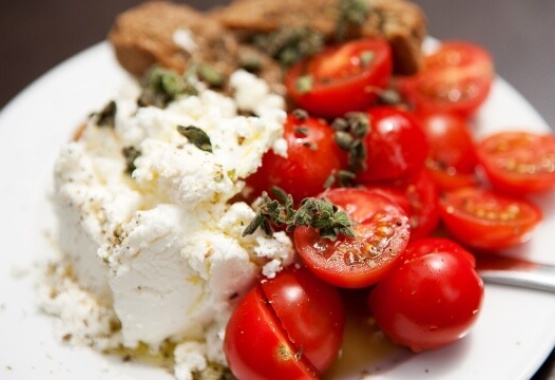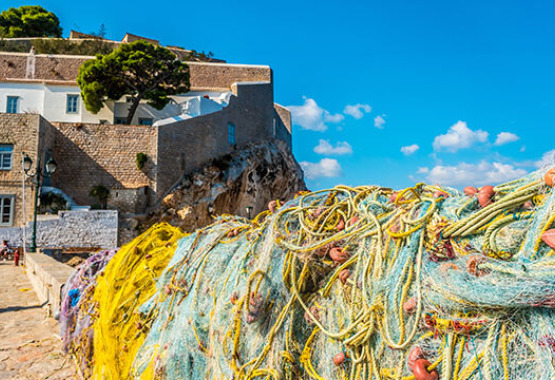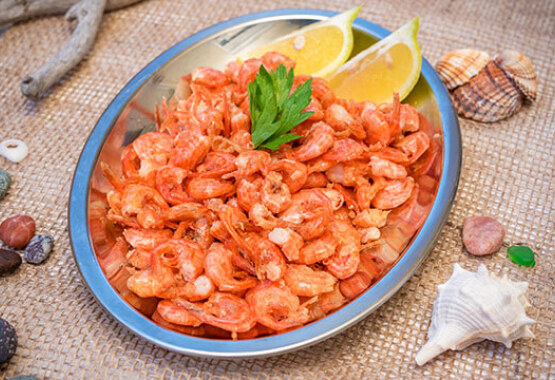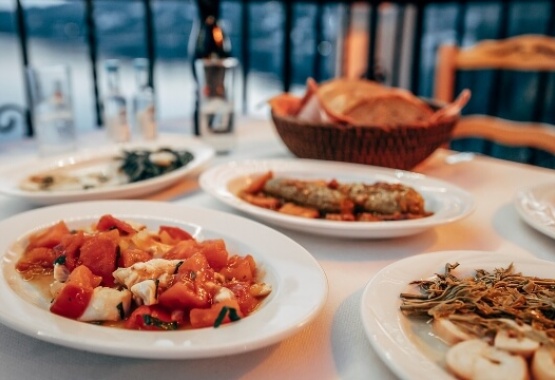
CHANIA
Tarteles are scrumptious traditional tarts filled with sweet myzithra cheese, and flavoured with cinnamon, mastic or finely chopped peppermint; this is a standard Easter Sunday treat, also served on other festive occasions. Other customary preparations include egg-dying (red is by far the preferred colour, yet other strong colours can be used as well); baking tsoureki, a kind of fluffy plaited brioche with a red egg nestled in one of the folds, and lamprokouloura, an Easter bread wreath adorned with 3 dyed red eggs.
Early on Holy Saturday morning, local housewives start their preparations for the traditional feast that will follow after the Resurrection Mass at midnight. The fasting period is ended with this rich meal which includes several mouthwatering meat dishes. Among the typical dishes are: mageiritsa (a meat soup made with finely chopped lamb offal, lemon juice, lettuce and dill); gardoumakia (lamb belly wrapped in offal) oven-baked or stewed on the stovetop; fresh cheese and a strong red wine for the traditional toasting.
The Easter Sunday morning means an early start for the family members in charge of preparing the lamb to be roasted on the spit. If you’re invited to an Easter Sunday feast, you will enjoy the whole process most probably out in the open. Locals light a fire in a pit on the soil and wait patiently until it is reduced to burning hot embers or use hot coals in a barbecue with a souvla (spit) placed above it. Roasted lamb or kid on the spit is the traditional Easter Sunday dish in Crete as is in a lot of other places around the country.
In older times however, it wasn’t, as Cretans used different roasting techniques referred to as ofto or antikristo; this involved large pieces of meat (called goulidia) arranged in wooden or iron spits and allowed to roast by the fire. Other Easter Sunday dishes are boiled lamb; kid / mutton cooked with tomato sauce and strifta (local pasta); or lamb with artichokes avgolemono (a savoury lemon and egg sauce). If you happen to be in Chania for Easter, don’t miss out on savouring the scrumptious tourta meat pie.
Feasting goes on throughout the day. Friends and relatives come to visit and wine is served over and over… It is also customary to drink tsikoudia (a strong traditional spirit – a.k.a. raki), dance to folk songs, recite mantinades (playful impromptu poems and rhymes) and sing rizitika (a capella songs).
Easter Culinary Delights from Crete
The well-known age-old Cretan cuisine includes a large variety of delicious dishes and tidbits traditionally prepared for big celebrations such as the Easter feast. On Maundy Thursday household ovens get busy baking tasty kalitsounia, anevata and lychnarakia (local savoury and sweet cheese pies).Tarteles are scrumptious traditional tarts filled with sweet myzithra cheese, and flavoured with cinnamon, mastic or finely chopped peppermint; this is a standard Easter Sunday treat, also served on other festive occasions. Other customary preparations include egg-dying (red is by far the preferred colour, yet other strong colours can be used as well); baking tsoureki, a kind of fluffy plaited brioche with a red egg nestled in one of the folds, and lamprokouloura, an Easter bread wreath adorned with 3 dyed red eggs.
Early on Holy Saturday morning, local housewives start their preparations for the traditional feast that will follow after the Resurrection Mass at midnight. The fasting period is ended with this rich meal which includes several mouthwatering meat dishes. Among the typical dishes are: mageiritsa (a meat soup made with finely chopped lamb offal, lemon juice, lettuce and dill); gardoumakia (lamb belly wrapped in offal) oven-baked or stewed on the stovetop; fresh cheese and a strong red wine for the traditional toasting.
The Easter Sunday morning means an early start for the family members in charge of preparing the lamb to be roasted on the spit. If you’re invited to an Easter Sunday feast, you will enjoy the whole process most probably out in the open. Locals light a fire in a pit on the soil and wait patiently until it is reduced to burning hot embers or use hot coals in a barbecue with a souvla (spit) placed above it. Roasted lamb or kid on the spit is the traditional Easter Sunday dish in Crete as is in a lot of other places around the country.
In older times however, it wasn’t, as Cretans used different roasting techniques referred to as ofto or antikristo; this involved large pieces of meat (called goulidia) arranged in wooden or iron spits and allowed to roast by the fire. Other Easter Sunday dishes are boiled lamb; kid / mutton cooked with tomato sauce and strifta (local pasta); or lamb with artichokes avgolemono (a savoury lemon and egg sauce). If you happen to be in Chania for Easter, don’t miss out on savouring the scrumptious tourta meat pie.
Feasting goes on throughout the day. Friends and relatives come to visit and wine is served over and over… It is also customary to drink tsikoudia (a strong traditional spirit – a.k.a. raki), dance to folk songs, recite mantinades (playful impromptu poems and rhymes) and sing rizitika (a capella songs).




